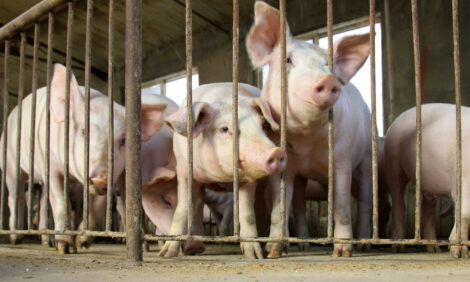



CME: Seasonal Price Indexes for Pork Products
US - According to CME's Daily Livestock Report for 16 July, the Livestock Marketing Information Center (LMIC) publishes annually seasonal price indexes for a number of livestock and meat products and has recently released updated indexes based on data from 1999-2008.
LMIC is a cooperative effort of 28 land-grant universities, 5 USDA agencies and 7 affiliate members (of which the Chicago Mercantile Exchange is one) that provides economic analysis and data services to its members. One of its longstanding and ongoing products is this series of seasonal indexes that provide insight into the intra-year price changes for, among others, the four livestock/meat commodities traded at the CME—-Live cattle (represented at left by LMIC’s index for Fed Steers), Feeder Cattle, Lean Hogs and Pork Bellies. Index charts for the last three appear below.



LMIC’s update that includes 2008 data do not, of course, differ
much from past years. Averages over 10 year periods just do not change
much when the oldest year is dropped and a new year is added. Annual
updates of these indexes are not available until July of each year since the
monthly indexes are centered on a 12-month data period. That means that
June data must be available before the index for the previous December
can be computed.
Ratios of the index values for any two months can be used to
compute the expected seasonal change for the price in question. For instance,
expected December fed steer prices can be calculated by using
the December index value (100) divided by the July value (96) and multiplying
by a July fed steer price. The result would be the December price
estimate based on seasonal factors. Obviously, other factors could also
influence the December price but these indexes allow seasonal impacts to
be discerned quickly and easily.
Another interesting feature of the LMIC index graphs is the inclusion
of the maximum and minimum indexes for the 10-year period. This
information provides an idea of the dependability of these seasonal patterns
over time. Note that the range from the minimum to the maximum for
Fed Steers is generally 15 to 20 index points where the range for Slaughter
Hogs (Figure 2) is hardly ever over 10 points. The narrower
range for Slaughter Hogs suggests that their seasonal price pattern is
more predictable and, theoretically, more useful for forecasting prices. The
caveat to that statement, of course, is current hog prices which have defied
the normal seasonal pattern this summer, primarily because of the impact
that H1N1 influenza had on pork exports — a perfect example of the "other
forces" that can confound the seasonal patterns.
A number of resources are available on the public portion of the
LMIC’s website, www.lmic.info. These resources include a weekly Situation
and Analysis section, weekly price and production data, a selection of
graphs, links to useful USDA reports and direct links to the websites of
many LMIC members’ — a membership that includes virtually all of the top
public-sector market researchers and analysts.






